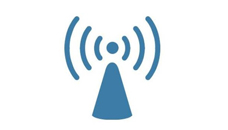Information technology
-
-
Wireless communication detection
CTS
One stop testing and certification service in all fields
24-hour service line: +86-139 2959 4349
Switchboard: +86-0769-2236 0704
Email: Peter@cts -cn. com
SAR definition
SAR concept 1: introduction of SAR concept: as various organs of the human body are lossy media, induced electromagnetic fields will be generated in the body under the action of external electromagnetic fields, and the induced electromagnetic fields in the body will generate current, leading to the absorption and dissipation of electromagnetic energy. SAR is used to characterize this physical process.
SAR concept 2: specific absorption rate
It is defined as the electromagnetic radiation (irradiation) energy absorbed by the organism per unit time (s) and per unit mass (kg), and its unit is w/kg.
SAR concept 3: measurement mechanism of SAR:
As can be seen from the definition, SAR evaluation is carried out by measuring field strength distribution or temperature change. However, it is difficult to evaluate SAR by measuring temperature rise, and the error is very large. Therefore, at present, the electric field probe is widely used to measure the field intensity distribution for SAR evaluation in order to obtain higher measurement accuracy.
Definition of SAR: under the action of external electromagnetic field, induced electromagnetic field will be generated in human body. Since various organs of the human body are lossy media, the electromagnetic field in the body will generate current, resulting in the absorption and dissipation of electromagnetic energy. SAR is often used to characterize this physical process in biological dosimetry. The meaning of SAR is the electromagnetic power absorbed or consumed by human tissue per unit mass, in w/kg.
SAR detection standards and products
Products: mobile phones, laptops, tablets, USB dongle, card bus, etc.
Product communication system: gsm/gprs/edge: 850/900/1800/1900mhz;
HSDPA/HSUPA; CDMA2000, WCDMA,LTE, Wi-Fi; Bluetooth, etc
SAR detection standard:
International: IEEE Std 1528; IEEE Std C95.1; IEEE C95.3; IEC62209-1; IEC62209-2
United States and Canada: FCC oet65; ANSI C63.19; ANSI C95.1; ANSI C95.3; RSS102;
Europe: en 50360; EN50361; EN 62209-1; EN 62209-2;
Japan: ARIB std-t56
Australia: as/nzs2772.1;
China: yd/t 1664.1
Wireless communication EMC
european union
In the EU market, the "CE" mark is a compulsory certification mark. Whether products produced by enterprises within the EU or products produced by other countries, in order to circulate freely in the EU market, they must be affixed with the "CE" mark to show that the products comply with the basic requirements of the EU new method of technical coordination and standardization directive. This is a mandatory requirement of EU law for products.
Radio and communication terminal products, test certification includes:
1. EMC test EMC
2. Safety regulation test LVD (in the new directive, this test is also required for RF products with battery input)
3. Carry out radio communication equipment test (RF test) according to European ETSI standard
4. Electrical safety and health protection test (health, SAR assessment)
FCC certification
FCC certification: FCC (Federal Communication Commission) was established by communications in 1934 and is an independent agency of the U.S. government. FCC approval is required for communication products and digital products to enter the U.S. market. FCC Committee investigates and studies all stages of product safety to find the best way to solve the problem. At the same time, FCC also includes the detection of radio devices and aircraft.
According to the provisions of the relevant parts of the Federal Communications regulations (CFR Part 47), all electronic products entering the United States need to be certified for electromagnetic compatibility (except for products specifically stipulated in some relevant provisions), among which there are three common certification methods: certification, DOC and verification. The certification methods and procedures of these three products are quite different, and the optional certification methods for different products are stipulated in the FCC. The strictness of its certification decreases.


